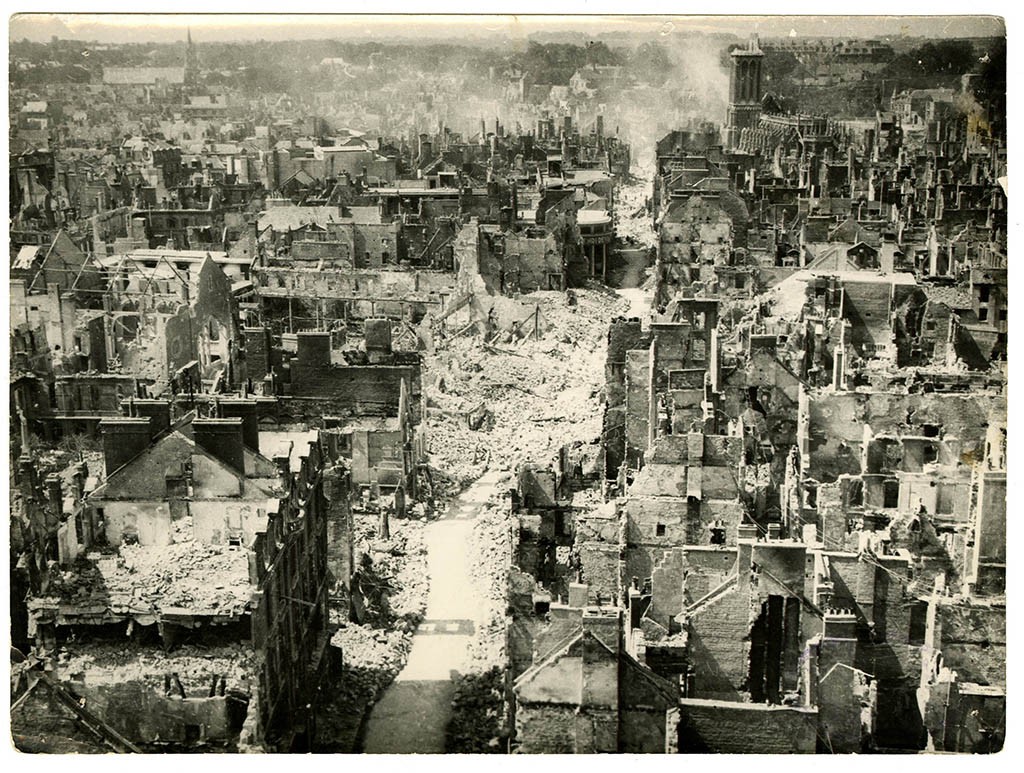On 6 June 1944, Caen was the main strategic objective for the British 3rd Infantry Division which had landed on Sword Beach. Firmly positioned to the north and west of the city, two German tank divisions prevented the Allies from capturing the city in the first two days. The next few days British General Bernard Montgomery attempted to take Caen with a pincer movement and attacked the city from the northeast and southwest. On 13 June the offensive was stalled in Villers-Bocage by German Tiger tanks.
A further attack was planned by the British 8th Corps. The so called Epsom Operation brought together 60,000 men with the intention of moving around Caen across the Odon River. Within a few days the offensive was stopped at the foot of hill 112. A few weeks later General Montgomery decided to capture Caen in a head-on attack, that became known as Operation Charnwood. In the morning of 8 July 1944, 115,000 men and 500 tanks of the British 1st Corps attacked the French city of Caen.
The previous day the town had been bombarded by 450 bombers of the Royal Air Force and 2,600 tons of bombs had been dropped, killing 300 civilians. During Operation Charnwood the British and Canadian troops reached the bridges of the Orne on 9 July. The river's left bank was liberated, together with the Ilot Sanitaire, an emergency hospital and refuge, which sheltered some 20,000 civilians. Montgomery launched Operation Goodwood to capture the right bank of the Orne as well.
At dawn on 18 July, 6,000 tons of bombs were dropped over eastern Caen. With the simultaneous Operation Atlantic, entrusted to the Canadians, the town was entirely liberated on 19 July 1944. Instead of one day, it took the Allies six weeks to capture the city.
It was a Pyrrhic victory, with a devastating toll. 30,000 Anglo-Canadian soldiers were killed. 80 percent of the town was destroyed and it lost 3,000 of its inhabitants.
